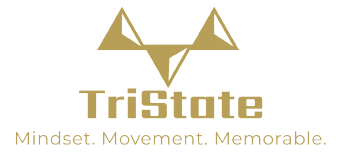Why Olympic Weightlifting Should Be in Every Strength Program
By Coach Dan — Tri-State Training | Mindset. Movement. Memorable.
When you look at the Olympic lifts as a whole, there’s nothing quite like the productivity you get out of them. The snatch, clean, and jerk don’t just build strength — they build athletes. These lifts develop explosiveness, coordination, balance, and awareness of how to move heavy objects efficiently.
Yes, there are other ways to train power, and some coaches may argue they’re easier to teach. But here’s the thing: the Olympic lifts can be scaled, modified, and adapted to fit any athlete at any level. You don’t have to do the full lifts to reap their benefits.
Why Every Athlete Benefits
Whether you coach football, volleyball, soccer, or general strength and conditioning, Olympic lifting creates athletes who are more explosive and better movers. These movements are built on one foundation — developing force.
They’re among the most force-productive exercises you can program. The power, timing, and coordination it takes to snatch or clean translate directly into sprinting, jumping, changing direction, and nearly every athletic quality you can imagine.
Just as important, Olympic lifting teaches athletes to move with intent. It builds awareness of how to handle load, how to stay connected to their movement, and how to control their body in motion — skills that carry over to any training style or sport.
Improving Movement Quality (Without Forcing Full Lifts)
When most people think of Olympic lifting, they picture the full snatch or clean and jerk — but that’s not where every athlete needs to start. Good coaching means finding ways to teach the principles of the lifts, not just the full movement.
That can mean:
Starting from the power or hip position instead of the floor.
Using dumbbells or kettlebells to introduce explosiveness and coordination.
Working on pulling or catching mechanics before adding full overhead positions.
Teaching these patterns safely helps athletes build positional strength, develop timing, and move better overall — even before they touch a barbell from the floor.
Breaking Down the Teaching Process
At Tri-State, we work with athletes as young as five and as advanced as collegiate competitors. The teaching approach looks different for each group, but the principle stays the same: build from simple to complex.
We start with short-range power positions and focus on teaching athletes how to drive through the hips, maintain posture, and feel explosive in small movements. As they progress, we add range — from high hang, to hang, to eventually the floor.
Even in those short-range positions, we’re already teaching the pulling mechanics, start position, and body control that carry over into full lifts later.
Some programs even structure progressions by age or year — for example, freshmen and sophomores may only perform hang power cleans, while upperclassmen progress into full lifts once they’ve built the foundation. Florida high schools do this exceptionally well, treating Olympic lifting as a varsity sport. Older students help teach younger ones, reinforcing both leadership and technical understanding.
The common fear for coaches — especially in larger settings — is that Olympic lifts are “too hard to teach.” But once you define your structure and your progressions, it’s entirely manageable. You just need a plan, clear teaching positions, and an understanding of why you’re implementing it.
Programming & Integration
Olympic lifting doesn’t have to replace your strength program — it enhances it.
For beginner or intermediate athletes, variations like the muscle snatch and power clean are two of the most transferable movements you can include. They’re simple to teach, they build coordination, and they teach athletes to be fast under the bar without needing advanced mobility.
In off-season programming, these lifts help athletes learn to generate force and pair well with squats and pulls to maximize strength development. In-season, movements like the muscle snatch or hang variations allow athletes to stay explosive without overloading their body.
And remember — positions can be adjusted. If an athlete can’t comfortably lift from the floor, start from the hip. You’ll still get the same neuromuscular adaptations and athletic benefit without the unnecessary stress or risk.
Long-Term Benefits for Youth and Team Athletes
For younger athletes, learning Olympic lifts is a long-term investment. By the time they reach college, they’ll already be expected to perform these movements. Teaching them early — safely and progressively — makes them confident, competent, and standout athletes in the weight room.
When a freshman walks into their first college weight room and already knows how to move, rack, and pull properly, coaches notice. That confidence and familiarity can set them apart immediately.
And beyond the physical development, there’s something powerful about the mindset weightlifting teaches. There’s joy in chasing precision, in mastering movement, and in measuring progress through performance, not just numbers. It builds patience, accountability, and pride in the process — traits every athlete can carry beyond the barbell.
Final Thoughts
Olympic lifting doesn’t have to be complicated — it just needs to be coached with intent. Start simple. Teach mechanics. Build confidence. And remember that whether it’s a 5-year-old learning to jump with intent or a college athlete hitting power cleans, they’re all developing the same thing: the ability to produce force and control it.
If you’re a coach looking to integrate Olympic lifting into your program — or an athlete ready to start learning the lifts — this is the perfect time to start.
